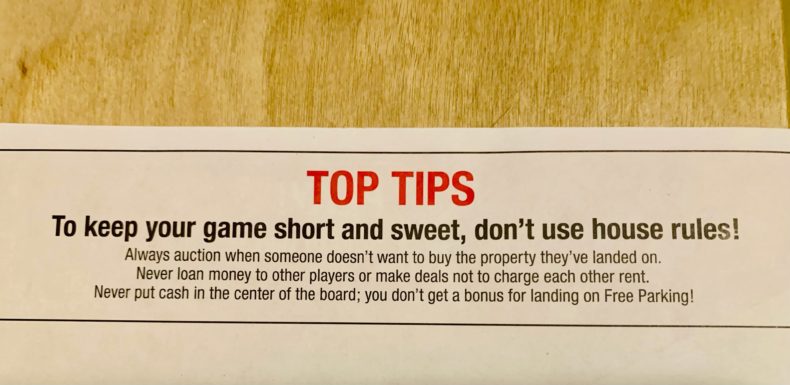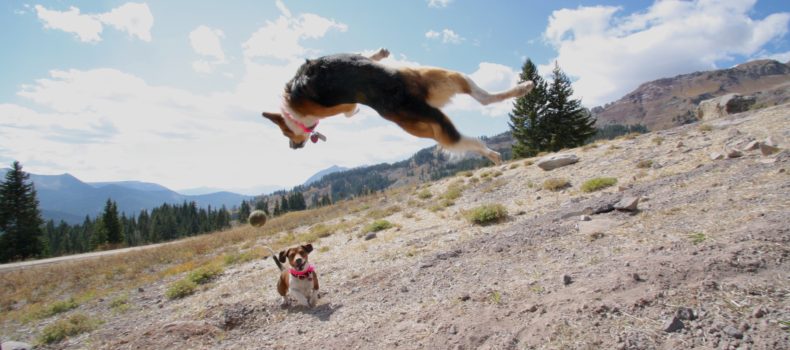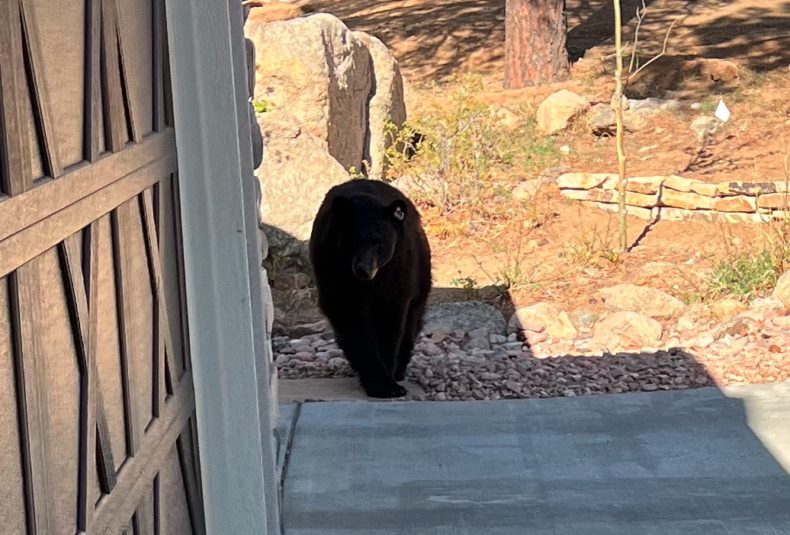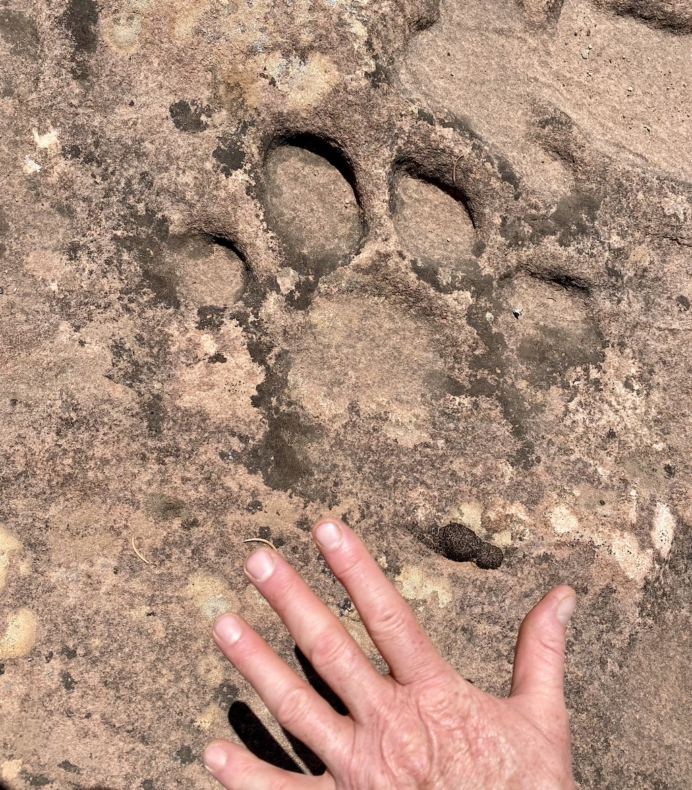
This summer, in exchange for going to swim lessons with a minimum level of enthusiasm, one of my kids asked whether we could get a new version of the game that wasn’t so battered. This did not seem unreasonable. At the end of the summer, the reluctant swimmer made his way out to a distant buoy in a mountain lake—a success! At the end of September, I picked up the most recent edition of Monopoly.
But was it a success? It was certainly newer. The $50 bills are purple, instead of blue. The Community Chest cards have some new descriptions: you spend time with an elderly neighbor, donate blood, go to jail for playing music too late. Some of these things take getting used to, but we’re flexible. Or, at least I was until I saw the large warning note: TO KEEP YOUR GAME SHORT AND SWEET, DON’T USE HOUSE RULES.
This seemed like the most unwelcome change of all. Because who goes into Monopoly thinking a game will be short? And as for sweet, house rules here and elsewhere can make for the most lovely games of all.
Our games use many of the techniques the top tips recommend against. No $500 bill on Free Parking? When someone’s close to bankruptcy, this beautiful golden piece of paper has bolstered many a sagging spirit. (I did also once try to bribe someone—to ask me to a high school dance? To not ask me to a high school dance?—with one of these bills. I ended up going to the dance but I can’t remember whether that was the intended outcome.)
And not loan money? Our most recent Monopoly game consisted of financial ups and downs that were weathered by kind gestures—paying off someone else’s mortgage, advancing them their GO money, even forgiving rent—and it was one of the most successful we’ve ever had. Others have come to a sudden, angry end.
We have others. In Apples to Apples, the dealer is allowed to pick whatever card they’d like to play, they’re not stuck with the one that they draw. And Uno—well, maybe I’ve never read the rules to Uno. In Solitaire, if you get stuck, you can flip through the cards in your hand two at a time, then one at a time. Why? Because that’s what my mom told me.
And the wonderful thing is, our house rules are not the only house rules! People come up with all sorts of terrific rules to suit their own needs. I asked some of the LWONers for theirs.
In Helen’s house, you can use the dictionary while playing Scrabble to check a word. “It’s considered bad form to flip through the dictionary looking for words that might exist, but making up words and looking them up is 100% fine,” she wrote. And if your word isn’t actually a word, you get a do-over. They also have a list of two- and three-letter words that people can use. Helen wrote that this “helps level the playing field a lot for kids and for people who aren’t maybe quite as good at remembering things as they used to be.”
Ann’s grandmother taught her grandchildren to play cards. One of her grandmother’s rules was that “if you were stuck at solitaire, you could put an extra king out, making 8 rows all together.”
An extra king! I never would have thought of that. Another thing that’s wonderful about house rules: their creativity. They are bespoke responses to the moment, whether that means avoiding a board-flipping tantrum or finding a way to move forward when the deck is stacked (sometimes on purpose, by a crafty sibling) against you. The game can become a puzzle to solve together, a celebration of the time that that someone put ZAXES (the plural of a tool used in roofing) on a triple word score tile.
There are many things to celebrate about our new Monopoly. There is a charming dinosaur token and you get money for rescuing a puppy and testing the slide at a playground you built. And there is Indiana again! We’ll keep a better hold on it—and we’ll hold onto our house rules, too.





